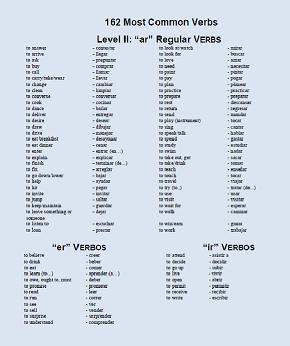Note: For more Visual Link Spanish questions, please comment at the bottom of any blog post, and we’ll answer them here on the blog.
Level 3 Question:
Hola Dave, I just started on level 3 and am a little confused on a couple of things. I’ve noticed that on some infinitive verbs you have place an “a” as in “to” before some verbs and not others. I thought that the infinitives included the “to”. For example, nadar means “to swim” but you have placed an “a” before the verb. Just not sure when to do that and when not to do that. I also noticed that in level 3 you have gone to “le” instead of “lo” and “les” instead of “los”. Again, not sure when to do that. I would appreciate some clarification on this. I’m sure you’ll get some more questions from me as well. I am really enjoying the course and have recommended it to several people. Hasta la proxima.—–Anonymous User—-
Hola Amigo!
That is a great question and one of my favorites to answer. In Spanish, there are many times when you use two verbs together. For example:
Quiero comer (I want to eat), necesito caminar (I need to walk), puedo hablar (I can speak).
However, there are certain initial verbs that always have a preposition afterwords if followed by another verb. The prepositions or “helping words” really don’t mean anything, they simply have to be put on in Spanish to “sound correct”. Here are a few examples:
Vamos a comer (we’re going to eat), tengo que caminar (I need to walk), enseñar a jugar (to teach to play), aprender a leer (to learn to read).
The verbs that do this just have to be memorized. The verbs that do it will always do it.
Book Recommendation to Help:
I highly recommend the 501 Spanish Verbs Book. It has a section that shows the verbs that use prepositions and many other useful things. It is my favorite non Visual Link Spanish language learning book. It shows all of the conjugations and tenses for 501 Spanish verbs.
Here’s a link to the book on Amazon:
To answer your question about “le” vs “lo”, “le” is an indirect object pronoun and “lo” is a direct object pronoun. Now, I realize that is pretty technical, so I’ll give you a few examples. Here is the brief and simple answer. For a more in-depth answer, please see our Online Digital Learning Center which has many in-depth lessons on grammar.
Direct object pronouns use “lo” (the “lo” is what receives the action).
Don’t hit him. No lo pegues.
She loves him. Lo ama
She hates him. Lo odia.
Indirect object pronouns use “le” (the “lo” changes to “le”): If you can put the word “something” after, then use the “le” which indicates is is an indirect object pronoun. Here are some examples:
I want to tell him. Quiero decirle (I want to tell him “something” – you can add “something” on afterward so you use “le”.)
She should ask him. Debe preguntarle. (She should ask him “something”.)
We are going to send him the letters. Vamos a mandarle las cartas. (In this case, “something” could take the place of “the letters” so you use the indirect object “le”.)
That is a brief answer. However, this topic goes much more in-depth that this and is covered well in our Digital Learning Center.
Hopefully that answers your questions.
¡Hasta luego!










